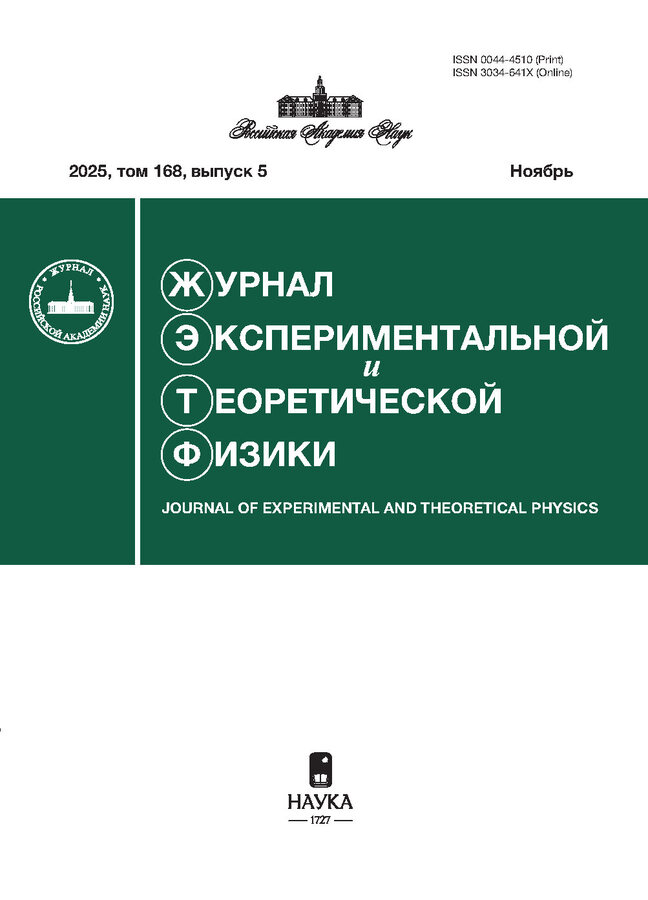Wavefront Correction for the Observation of an Exoplanet against the Background of the Diffraction Stellar Vicinity
- Authors: Yudaev A.V1, Shashkova I.A1, Kiselev A.V1, Komarova A.A1,2, Tavrov A.V1
-
Affiliations:
- Space Research Institute, Russian Academy of Sciences
- Moscow Institute of Physics and Technology
- Issue: Vol 163, No 2 (2023)
- Pages: 131-152
- Section: Articles
- URL: https://journals.rcsi.science/0044-4510/article/view/145249
- DOI: https://doi.org/10.31857/S0044451023020013
- EDN: https://elibrary.ru/OPNCZA
- ID: 145249
Cite item
Full Text
Abstract
We propose and investigate a precise wavefront correction method for the astronomical observation of exoplanets in the diffraction stellar vicinity. We show the applicability of the method for measuring and correcting the wavefront in the scheme of a telescope and an interferometric coronagraph without applying any Hartmann wavefront sensors. In our laboratory experiment we achieved a correction accuracy ~λ/50 and a coronagraphic contrast better than 105. We outline the prospects for increasing the correction accuracy to a target value of λ/500 to visualize the Earth in the vicinity of the Sun observed from a distance of 10 pc (in the immediate neighborhood of the Solar System) through an additional amplitude correction and the inclusion of non-common-path aberrations.
About the authors
A. V Yudaev
Space Research Institute, Russian Academy of Sciences
Email: yudaev@phystech.edu
117997, Moscow, Russia
I. A Shashkova
Space Research Institute, Russian Academy of Sciences
Email: yudaev@phystech.edu
117997, Moscow, Russia
A. V Kiselev
Space Research Institute, Russian Academy of Sciences
Email: yudaev@phystech.edu
117997, Moscow, Russia
A. A Komarova
Space Research Institute, Russian Academy of Sciences; Moscow Institute of Physics and Technology
Email: yudaev@phystech.edu
117997, Moscow, Russia; 141701, Dolgoprudny, Moscow oblast, Russia
A. V Tavrov
Space Research Institute, Russian Academy of Sciences
Author for correspondence.
Email: yudaev@phystech.edu
117997, Moscow, Russia
References
- W. Traub and B. Oppenheimer, in Exoplanets, ed. by S. Seager, University of Arizona Press, Tucson, Arizona, (2011), pp. 111-156.
- A.V. Yudaev, O.Y. Yakovlev, A.V. Kiselev et al., Sol. Syst. Res. 55, 367 (2021).
- O. Guyon, Annu. Rev. Astron. Astrophys. 56, 315 (2018).
- D. Mawet, L. Pueyo, P. Lawson et al., ArXiv astroph/arXiv:1207.5481.
- O. Guyon, E.A. Pluzhnik, M.J. Kuchner et al., Astrophys. J. 167, 81 (2006).
- N.J. Kasdin, V.P. Bailey, B. Mennesson et al., Proc. SPIE 11443, Space Telescopes and Instrumentation 2020: Optical, Infrared, and Millimeter Wave, 114431U (2020).
- A. Tavrov, S. Kameda, A. Yudaev et al., J. Astron. Telesc. Instrum. Syst. 4, 044001 (2018).
- P.N. Frolov, B.B. Shkurskii, A.V. Kiselev et al., Sol. Syst. Res. 47, 477 (2013).
- Дж. Гудмен, Введение в фурье-оптику, Мир, Москва (1970).
- H. Yang and X. Li, in Simulated Annealing, Theory with Applications, ed. by R. Chibante, IntechOpen, London, UK (2010), Ch. 15, p. 275.
- Y. Liu, J. Ma, B. Li et al., Proc. SPIE 8415, 6th International Symposium on Advanced Optical Manufacturing and Testing Technologies: Large Mirrors and Telescopes, 841504 (2012).
- P.J. Bord'e and W.A. Traub, Astrophys. J. 638, 488 (2006).
- Jo. L. Sayson, G.Ruane, D. Mawet et al., J. Astron. Telesc. Instrum. Syst. 5, 019004 (2019).
- A.V. Tavrov, Y. Kobayashi, Y. Tanaka et al., Opt. Lett. 30, 2224 (2005).
- Оптический производственный контроль, под ред. Д. Малакары, Машиностроение, Москва (1985).
- M. Beaulieu, L. Abe, P. Martinez et al., Mon. Not. Roy. Astron. Soc. 469, 218 (2017).
- J. Krist, A.J. Riggs, J. McGuire et al., Proc. SPIE 10400, Techniques and Instrumentation for Detection of Exoplanets VIII, 1040004 (2017).
- https://holoeye.com/spatial-light-modulators/.
- I. Shashkova, B. Shkursky, P. Frolov et al., J. Astron. Telesc. Instrum. Syst. 2, 011011 (2015).
Supplementary files










